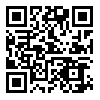Volume 19, Issue 1 (4-2014)
JEPR 2014, 19(1): 3-30 |
Back to browse issues page
Download citation:
BibTeX | RIS | EndNote | Medlars | ProCite | Reference Manager | RefWorks
Send citation to:



BibTeX | RIS | EndNote | Medlars | ProCite | Reference Manager | RefWorks
Send citation to:
Negahdari E, Piraee K, Keshavarz Haddad G, Haghighat A. (2014). Absolute and Relative Poverty Line Estimation based on Economies of Scale Approach through Stone-Geary Model: A Case Study of Iranian Urban Households (2006- 2011). JEPR. 19(1), 3-30.
URL: http://eprj.ir/article-1-1134-en.html
URL: http://eprj.ir/article-1-1134-en.html
1- Ph.D Candidate of Economics, Department of Economics, Shiraz Branch, Islamic Azad University, Shiraz, Iran , ebrahim.negahdari@gmail.com
2- Associate Professor, Department of Economics, Shiraz Branch, Islamic Azad University, Shiraz, Iran.
3- Associate Professor, Department of Economics, Graduate School of Management and Economics, Sharif University of Technology, Tehran , Iran.
4- Assistant Professor, Department of Economics, Shiraz Branch, Islamic Azad University, Shiraz, Iran.
2- Associate Professor, Department of Economics, Shiraz Branch, Islamic Azad University, Shiraz, Iran.
3- Associate Professor, Department of Economics, Graduate School of Management and Economics, Sharif University of Technology, Tehran , Iran.
4- Assistant Professor, Department of Economics, Shiraz Branch, Islamic Azad University, Shiraz, Iran.
Abstract: (8775 Views)
Poverty line, either absolute or relative, is a quite prevalent policy tool for characterizing the poor from the non-poor. Taking household characteristics such as age, education, employment, marital status and family dimensions into account, this research intends to estimate the poverty lines among urban areas of Iran by means of the Stone-Geary Utility Function. Hence, both absolute and relative poverty lines were estimated for the urban households' income and expenditure information across the provinces of Iran within 1991- 2011 period through an analysis via non-linear regression and two-phase panel. The results show that the factors such as age, education, profession, marital status, sex, and relative income have positive effects on food and non-food expenditures. The absolute poverty line of one-person and ten-person households was calculated to be 1803144 rials and 17318746 rials, respectively in 2011. This reflects economies of scale as to the consumption of goods and services in households; i.e. the amount of households’ expenses does not typically follow a one-one relation pattern with the number of family members.
Keywords: Absolute Poverty is Relative, Economies of Scale, Stone-Geary Model, Becker- Samuelson Approach, Urban.
Type of Study: Research |
Received: Feb 18 2015 | Accepted: Feb 18 2015 | ePublished: Feb 18 2015
Received: Feb 18 2015 | Accepted: Feb 18 2015 | ePublished: Feb 18 2015
| Rights and permissions | |
.jpg) |
This work is licensed under a Creative Commons Attribution 4.0 International License. |







